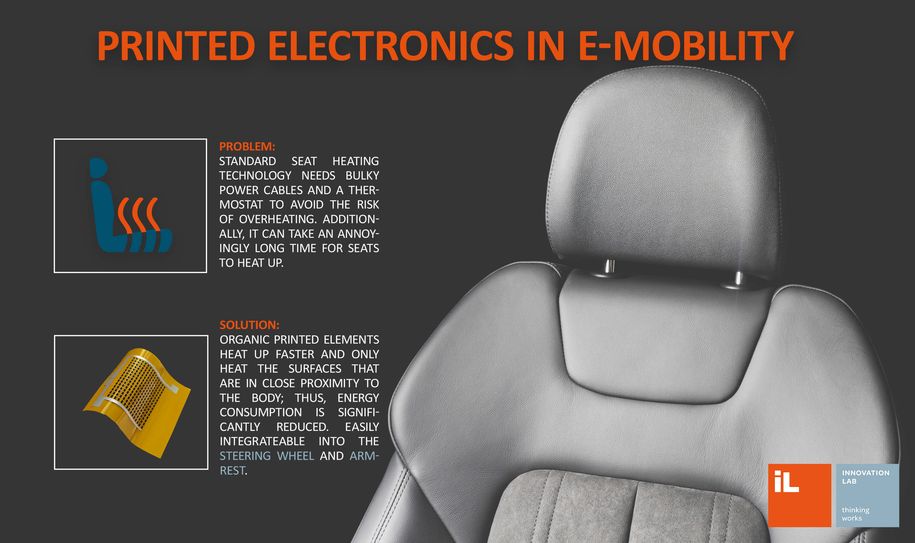![[Translate to English:] Beheizte Autositze](/fileadmin/_processed_/1/f/csm_Heated_Car_Seats_Title_02_07d6ac61ef.jpg)
COMFORTABLY SEATED?
Printed heating elements in car seats heat up immediately to a comfortable temperature on contact with the body. So you don't need bulky power cables or thermostats.
With printed electronics, your car seats will warm up in no time - giving you maximum seating comfort
For those of us living in cooler climates, our car's heating system is a very important part of the driving experience. Staying comfortable in the winter months depends on being able to warm up the car's interior quickly and keeping this temperature at an optimal level. Hands freezing to the steering wheel, frozen hips and cold backs should now be distant memories of the past.
Conventional convective car heating has, since its inception, comprised of blowing hot air into the vehicle's interior. This approach has several evident drawbacks, in particular that much of the generated heat is wasted in areas that are distant from where the car's occupants are actually located. This is especially the case when there is just the driver alone in the car – we’re wastefully heating up empty space for no benefit. Furthermore, the forced air flow tends to stir up dust and particles, which is quite unpleasant for many allergy sufferers.
Another issue is, of course, the ongoing transition over to electric vehicles. Whereas internal combustion engines could supply freely available excess waste heat for the purpose of heating the interior, in the case of electric vehicles, battery power is consumed for heating, which can noticeably reduce the car's travel range.
Today's standard seat heating technology relies on resistive elements carrying electrical current to generate heat. Though this process is quite effective, it needs bulky power cables that must be covered in insulating foam to stop the seat from becoming unpleasantly hot, and it can take an annoyingly long time for seats to heat up. There is also a certain risk of overheating, and thus a thermostat is needed to keep the temperature within the correct range.
Printed Electronics Open Up Entirely New Possibilities
Printed electronics promise to overcome these challenges and are starting to be used for heating car interiors. Organic printed elements lend themselves to being easily integrated into the sitting and backrest components of a car seat, as well as other areas such as the steering wheel and armrest.
Since the printed elements only heat the surfaces that are in close proximity to the body, energy consumption is significantly reduced. And compared to traditional seat heating systems, printed electronics are thinner and lighter, meaning less padding and foam is required and they heat up considerably faster.

Printed heating elements have a positive temperature co-efficient (PTC), meaning that safety is built-in, i.e. their resistance increases as temperature rises. In fact, above a certain temperature this occurs extremely rapidly, enabling the maximum physical temperature limit to be set by the system designer.
These heating elements can be printed on flexible materials such as textiles, making them easy to incorporate into car designs, thus improving sustainability. It’s also possible to print transparent heating elements, which are a recent development that is currently in the trial phase and will enable heating elements to be integrated into windshields or headlight for removing frozen ice deposits.
We can’t change winter weather but with printed electronics we'll at least make the driving experience more pleasant and help you get to your destination in maximum warmth and comfort.
